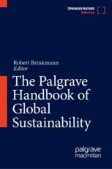Search
Search Results
-
Beyond secrecy and openness: telling a relational story about children’s best interests in donor-conceived families
Over the past two decades, there has been increasing demand for openness in policy and practice relating to donor-conceived families. With the...
-
Openness in donor conception families
Dempsey, Nordqvist and Kelly’s recent publication in BioSocieties highlights the complexity of disclosure in donor conception, which is legally,...
-
Doing Reflexivity in Research on Donor Conception: Examining Moments of Bonding and Becoming
For qualitative researchers, reflexivity is always an important aspect of ethical practice. In research on donor conception, there is a particular...
-
The ongoing work of kinship among donor half-siblings in The Netherlands
This article explores how Dutch people conceived via sperm donation attempted to make or unmake kinship with donor half-siblings, ‘strangers’ who are...
-
Leaving a Trace: Donor Plaques as Material Evidences of Generosity?
Contemporary philanthropy relies on a gift/counter-gift process: a person making a donation receives benefits for it, mostly financial (tax...
-
The Experience of Single Mothers by Choice Making Early Contact with Open-Identity or Private Sperm Donors and/or Donor Sibling Families in New Zealand
The number of Single Mothers by Choice (Choice Mothers), single women who choose to become mothers in the absence of a partner, is on the increase in...
-
The Search for Self: Adoption Reunions, Kinship Matters and Donor Conception
This paper begins with a precis and discussion of what we know of reunions between adopted adults and their families of birth. There then follows...
-
Projecting the Contribution of Assisted Reproductive Technology to Completed Cohort Fertility
Assisted reproductive technology (ART) is increasingly influencing the fertility trends of high-income countries characterized by a pattern of...

-
The European Union as an International Donor: Perceptions from Latin America and the Caribbean
In an era of doing development differently, it is highly important to analyse how priorities of partner countries around the world reinforce or...

-
Reluctantly Solo? Representations of Single Mothers via Donor Procedure, Insemination and IVF in Swedish Newspapers
This chapter explores representations of single mothers via ARTs (assisted reproductive technologies) in Swedish newspapers. These women are...
-
Uncertain commodities: egg banking and value in Ukraine
The development of vitrification techniques has increased the use of donor ova by allowing for their cryopreservation, storage, and international...
-
Sibling Relationships Across Families Created Through Assisted Reproduction
Third-party reproduction refers to assisted reproductive treatments involving the use of donor gametes or surrogacy. Children born through surrogacy...
-
Kinship Idioms and Care-Control Dynamics in Hungarian Co-ethnic Philanthropy
The paper investigates processes and consequences of ‘philanthropic kinning’, that is the use of kinship and family idioms in constructing and...
-
Donors we choose: race, nation and the biopolitics of (queer) assisted reproduction in Scandinavia
In the 2000s, same sex partnership laws, new reproductive technologies, and legislation rendering lesbian couples and single women eligible for...
-
Spatial multicriteria approach to water scarcity vulnerability and analysis of criteria weighting techniques: a case study in São Francisco River, Brazil
The water availability deficit is a governance crisis and an environmental, social, and economic risk. This study presents a spatial multicriteria...

-
Changes in China’s climate justice perceptions: domestic and international consequences
China’s perceptions of climate justice have changed since 2007, affecting the country’s domestic climate policies and its actions internationally....

-
Creatively Becoming a Family in the Fertility Clinic? Matching Donors with Non-heterosexual and Single Recipients in Commercial Care
New and transgressive third-reproductive-party technologies, including donor tissue treatments, bring about new ways and choices not just of...
-
Global Biodiversity: Trends and Regulation
Biological diversity or biodiversity is a term used to define the variability of all living organisms on Earth. While research confirms that...
-
“It’s harder for the likes of us”: racially minoritised stem cell donation as ethico-racial imperative
How best are we to understand appeals to participate in a biomedical project that are based both on invoking shared racial identity, and on framing...
